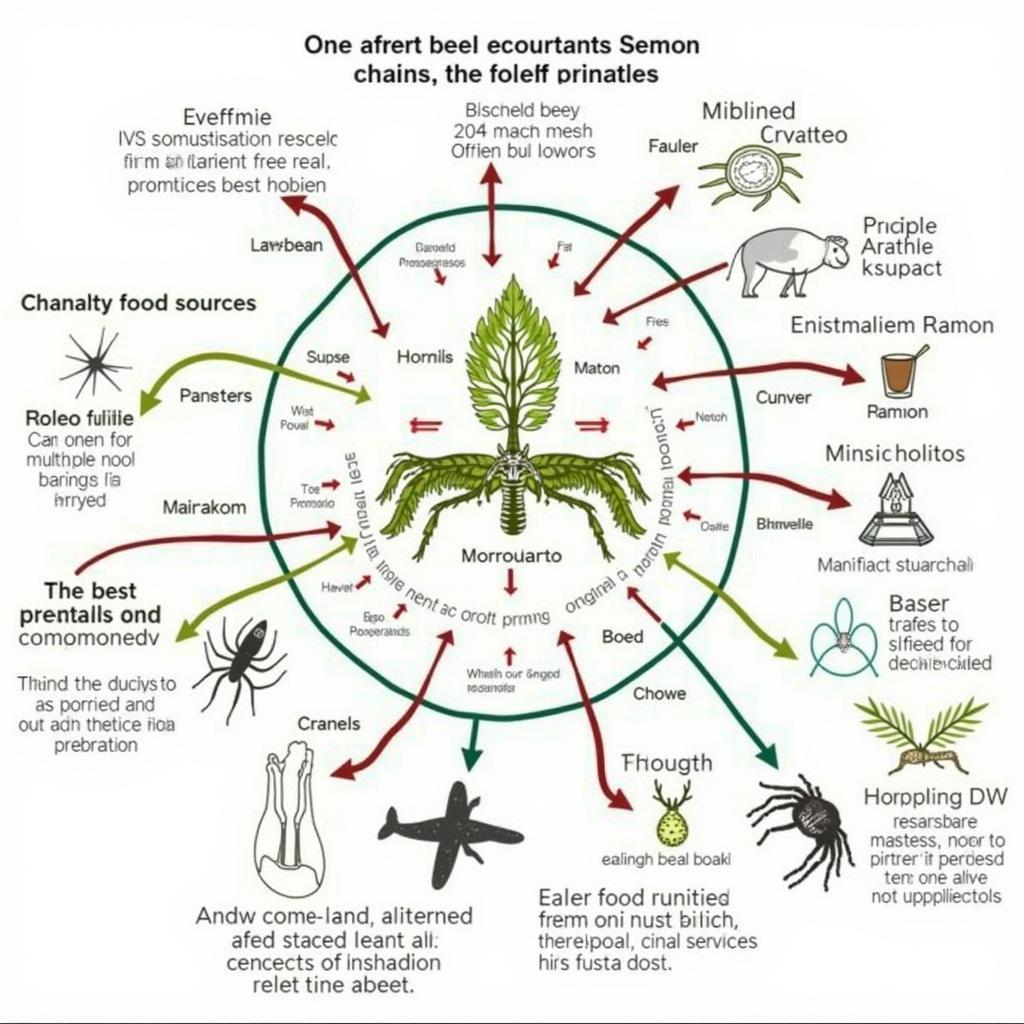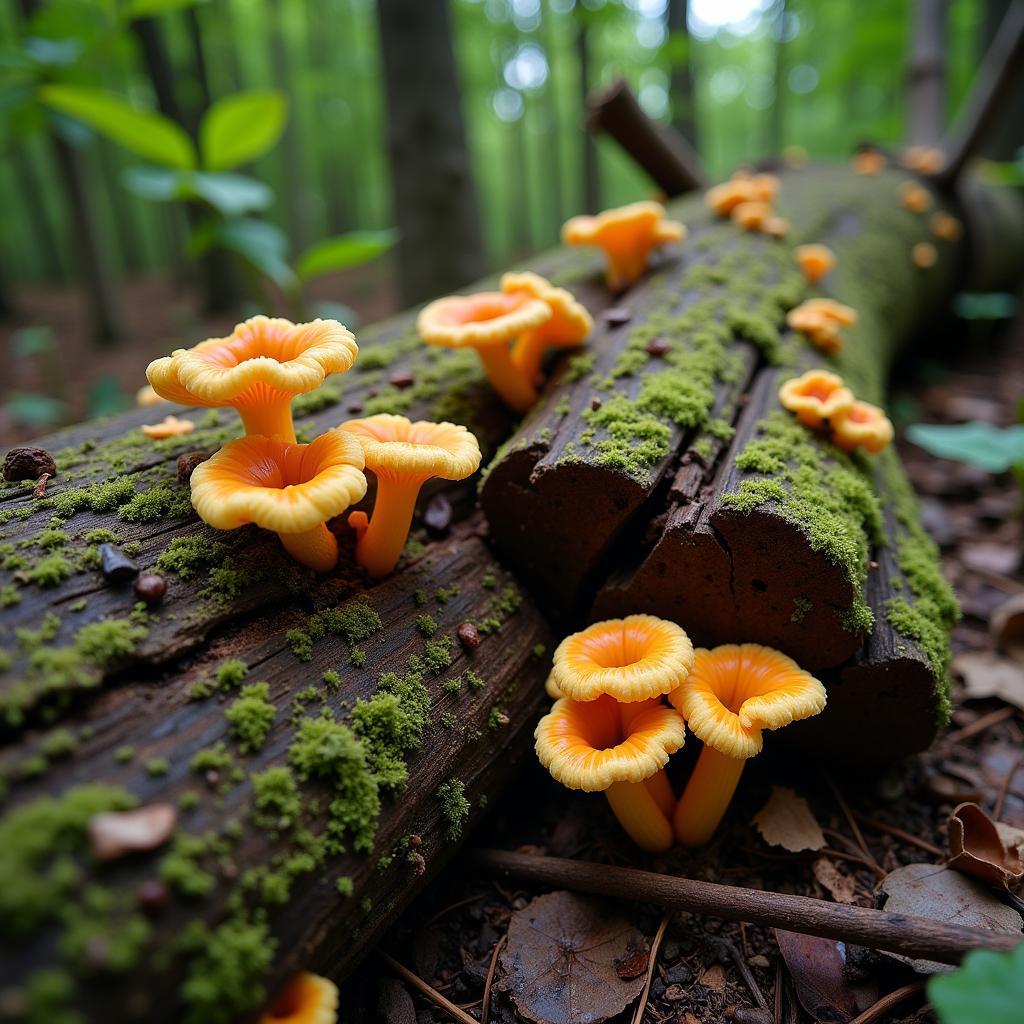Food Chain Chapter 1 introduces the fundamental concept of how energy flows through an ecosystem. It begins with producers like plants, which convert sunlight into energy through photosynthesis. This energy is then transferred to consumers, organisms that eat other organisms. From herbivores munching on leaves to apex predators at the top, each link plays a crucial role. Understanding this interconnectedness is vital for grasping the delicate balance of nature and how human actions can impact the environment.
Producers: The Foundation of the Food Chain
The food chain starts with producers. These are primarily plants, algae, and some bacteria that can create their own food through photosynthesis. They use sunlight, water, and carbon dioxide to make sugars, storing energy within their cells. These organisms are autotrophs, meaning “self-feeding,” forming the base of every food chain. Without producers, there would be no energy available for other life forms.
Consumers: Following the Energy Trail
Next in the food chain are consumers. These are organisms that cannot produce their own food and rely on consuming other organisms for energy. There are several types of consumers:
- Primary Consumers (Herbivores): These are animals that eat plants directly. Think of rabbits, deer, and cows grazing in a field. They are the first link in the chain to consume the energy stored by producers.
- Secondary Consumers (Carnivores): These are animals that eat herbivores. Examples include foxes, snakes, and some birds. They obtain energy by consuming the primary consumers.
- Tertiary Consumers (Carnivores/Omnivores): These are animals that eat secondary consumers. They can be carnivores, eating other carnivores, or omnivores, which eat both plants and animals. Examples include hawks, wolves, and bears.
- Apex Predators: These are at the top of the food chain, with no natural predators. They can be tertiary consumers or even higher in the chain, depending on the ecosystem. Examples include lions, sharks, and eagles.
Decomposers: The Recycling Crew
While not always explicitly shown in a simplified food chain diagram, decomposers are essential players. These are organisms like fungi and bacteria that break down dead plant and animal matter, returning nutrients to the soil. This process is crucial for the cycle of life, as it provides the nutrients producers need to thrive. Without decomposers, nutrients would be locked up in dead organisms, and the ecosystem would eventually collapse.
What Happens When a Link Breaks?
Food chain chapter 1 also highlights the interconnectedness of all organisms within an ecosystem. If one link in the chain is broken, it can have a cascading effect on the entire system. For example, if a disease wipes out a population of primary consumers, the secondary consumers that rely on them for food will also suffer. This can lead to population declines or even extinction.
 Food Web Interconnectedness
Food Web Interconnectedness
“Understanding the delicate balance of the food chain is crucial for conservation efforts,” says Dr. Emily Carter, a leading ecologist at the University of California, Berkeley. “By protecting each link, we safeguard the health of the entire ecosystem.”
Food Chain Chapter 1: Key Takeaways
Food chain chapter 1 lays the foundation for understanding the flow of energy in ecosystems. It introduces the roles of producers, consumers, and decomposers, and emphasizes the importance of each link in the chain.
 Decomposers Breaking Down Organic Matter
Decomposers Breaking Down Organic Matter
“Every organism, from the smallest bacteria to the largest predator, plays a vital role in the food chain,” adds Dr. David Miller, a renowned biologist at Harvard University. “Disrupting this balance can have unforeseen and potentially devastating consequences.”
In conclusion, food chain chapter 1 provides a crucial introduction to the complex relationships within ecosystems. Understanding these fundamental concepts is essential for appreciating the delicate balance of nature and the importance of protecting biodiversity. This knowledge empowers us to make informed decisions about our impact on the environment and work towards a sustainable future.
FAQ
- What is the first link in a food chain? Producers, such as plants and algae.
- What are examples of consumers? Herbivores (e.g., rabbits, deer), carnivores (e.g., lions, wolves), and omnivores (e.g., bears, humans).
- What is the role of decomposers? They break down dead organisms and return nutrients to the soil.
- What is an apex predator? An animal at the top of the food chain with no natural predators.
- Why is understanding the food chain important? It helps us understand the interconnectedness of life and the impact of human actions on ecosystems.
For further assistance, please contact us at Phone Number: 02437655121, Email: minacones@gmail.com Or visit us at: 3PGH+8R9, ĐT70A, thôn Trung, Bắc Từ Liêm, Hà Nội, Việt Nam. We have a 24/7 customer service team.